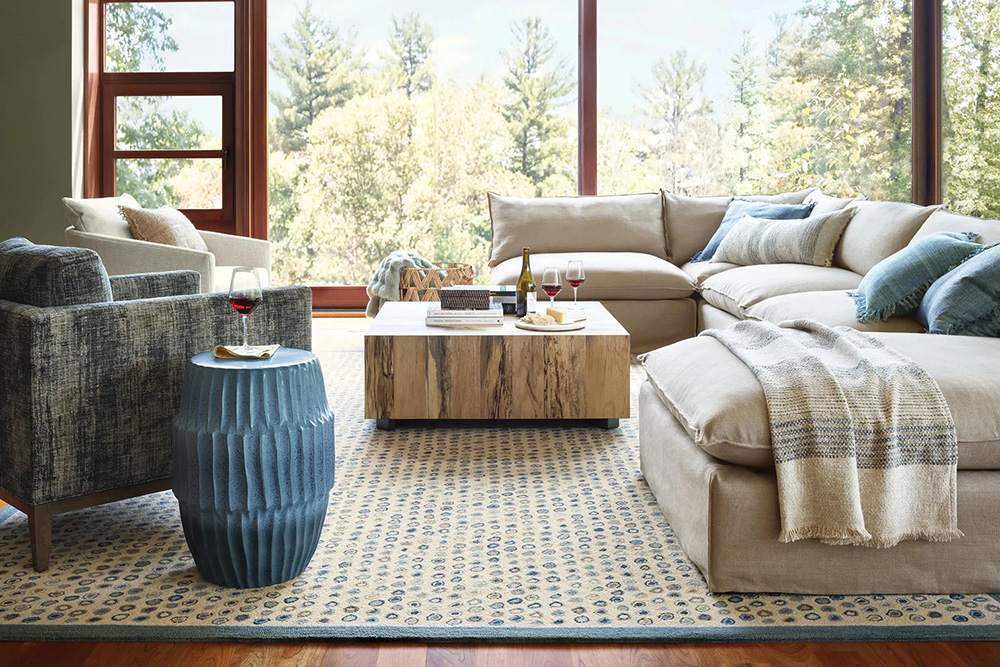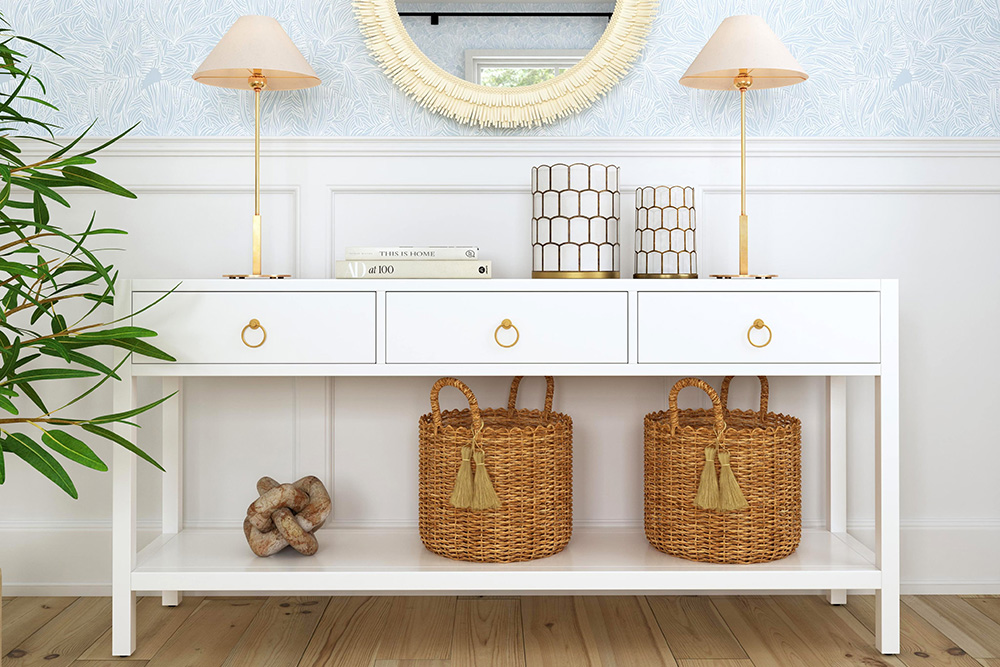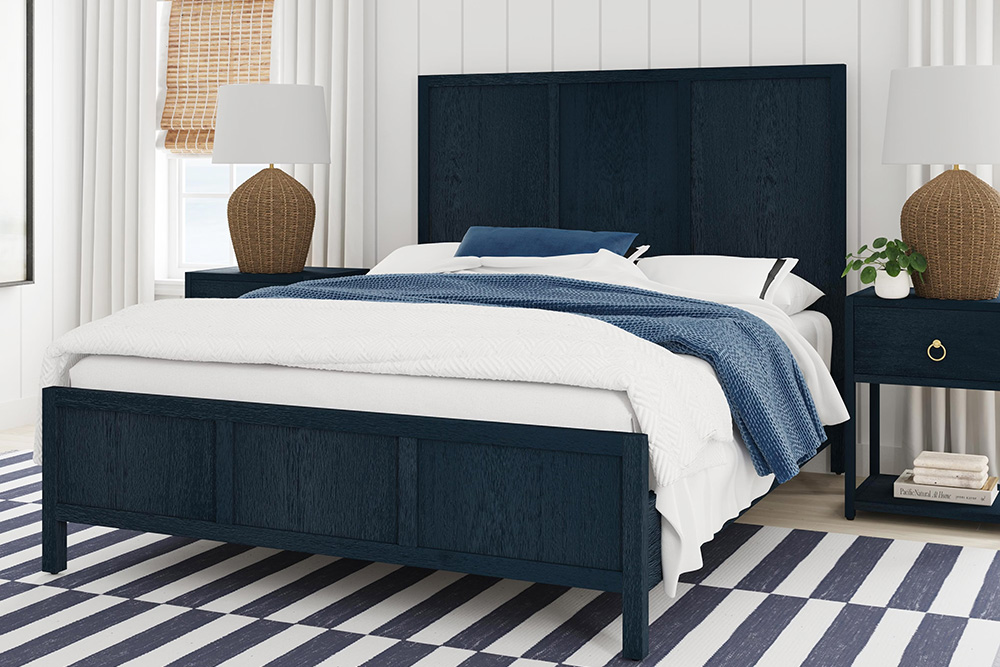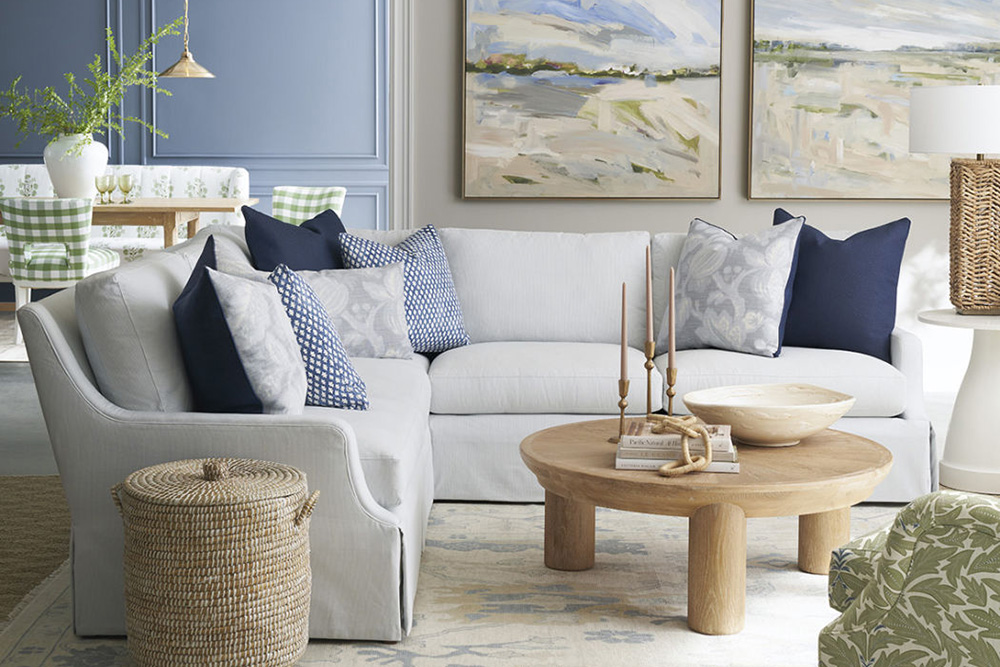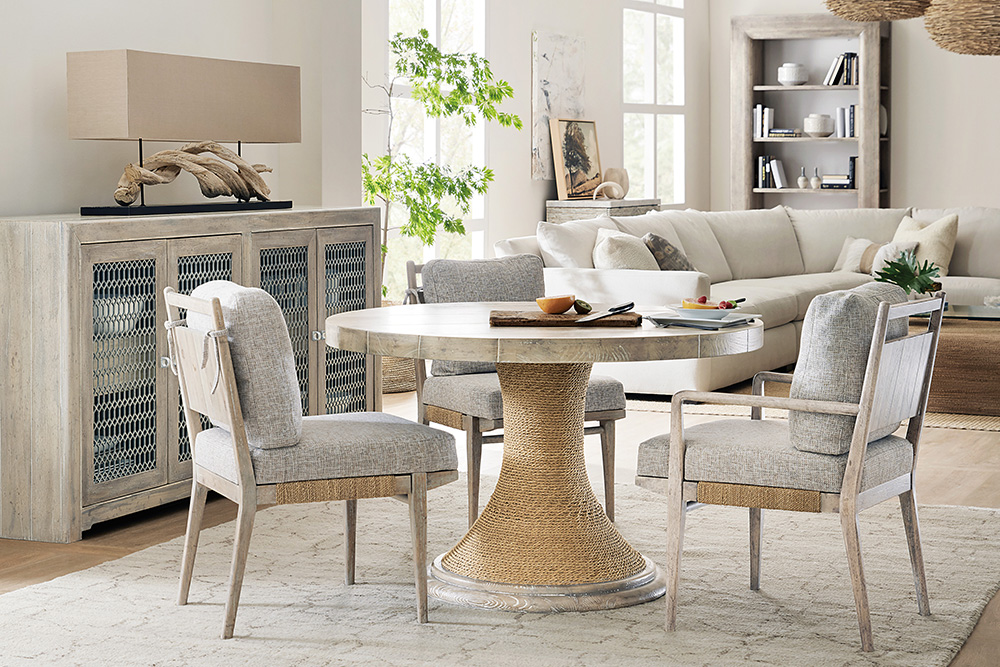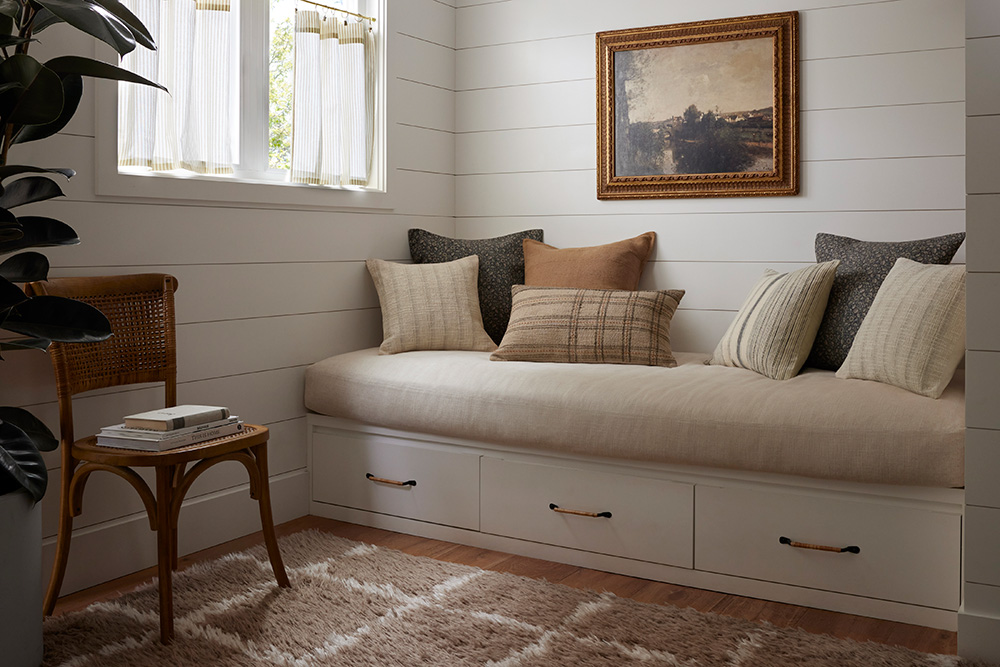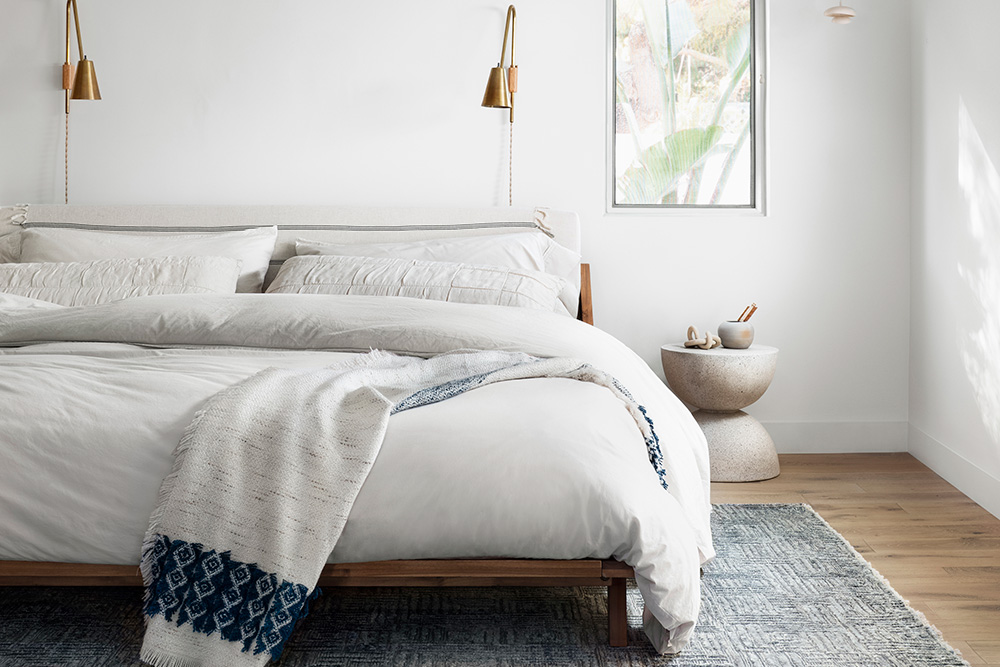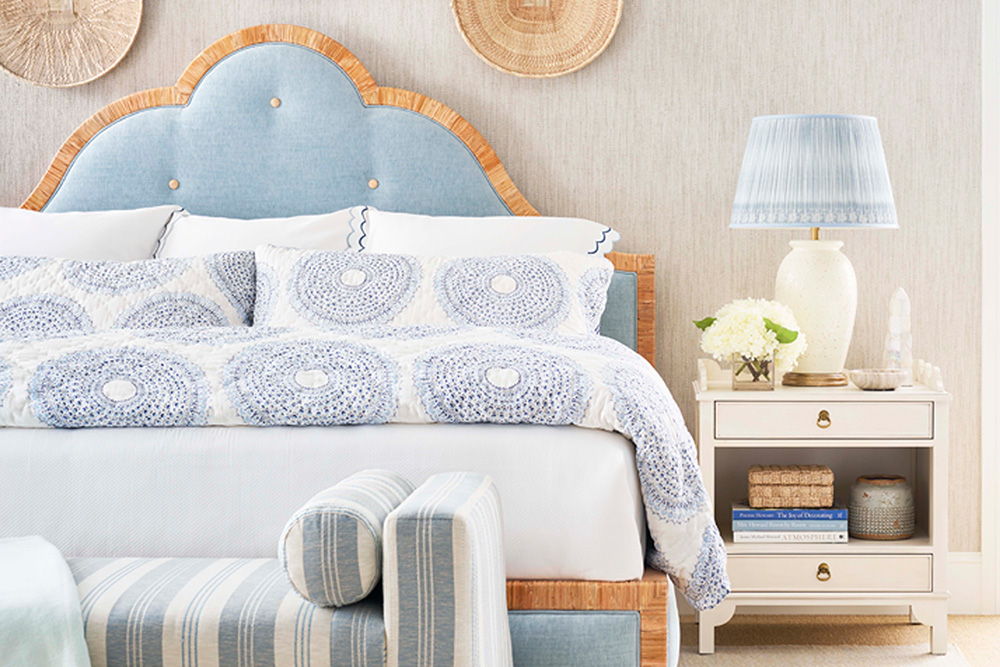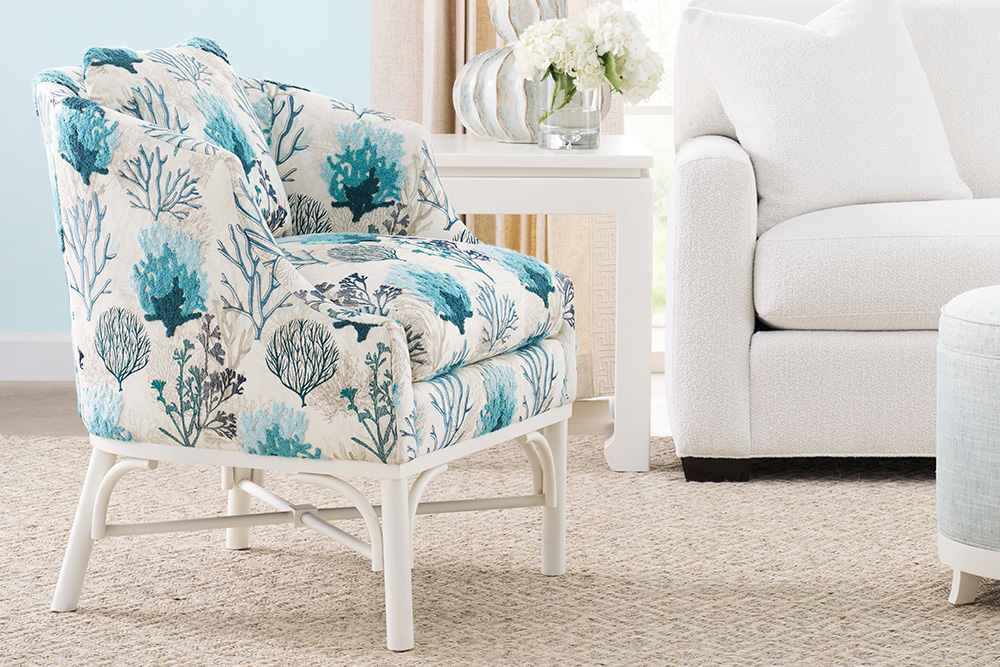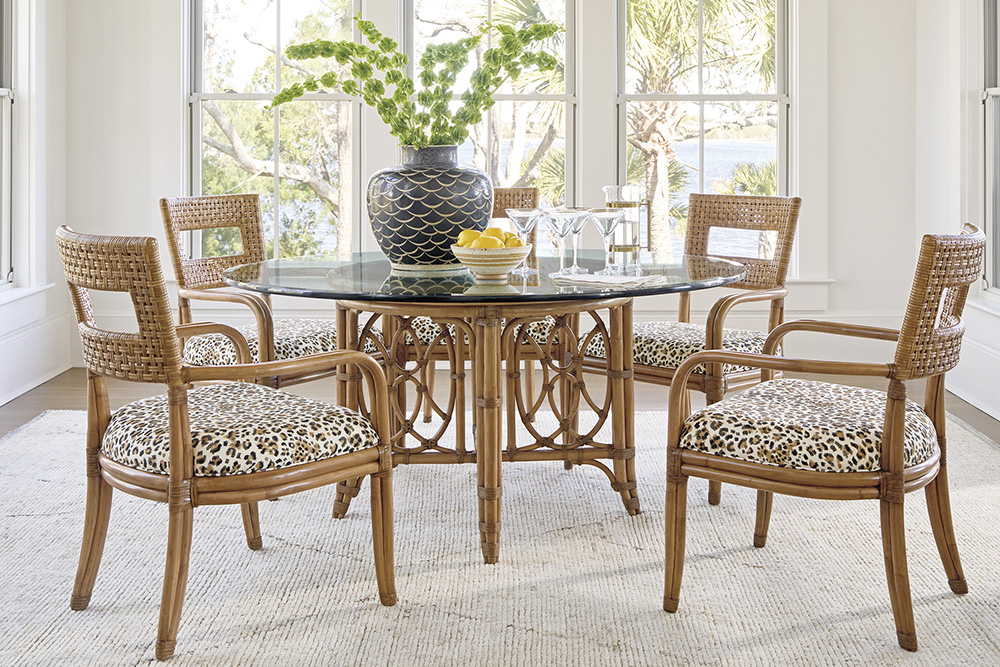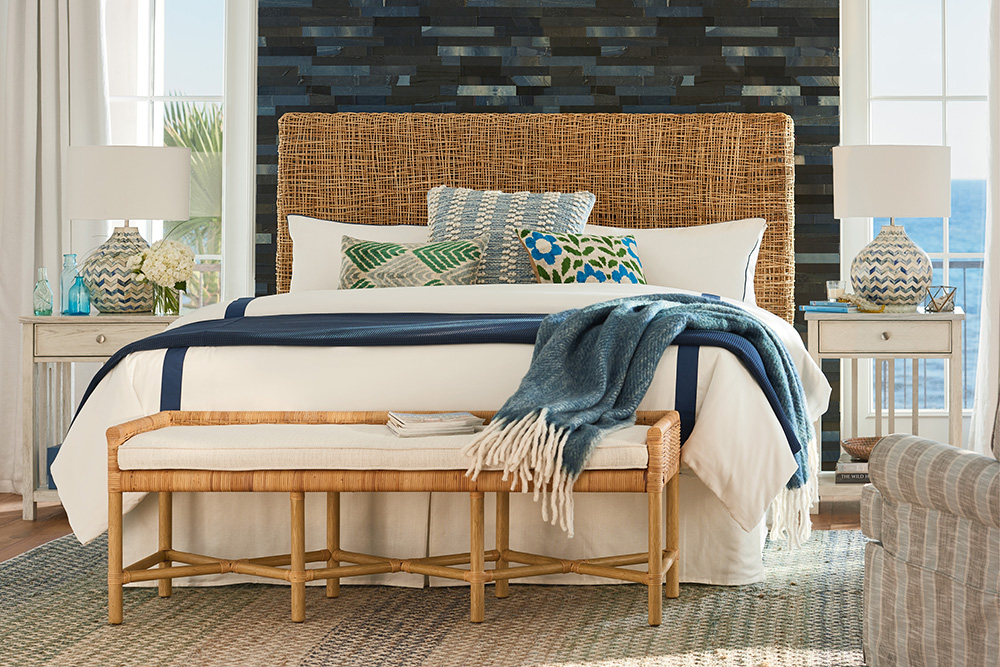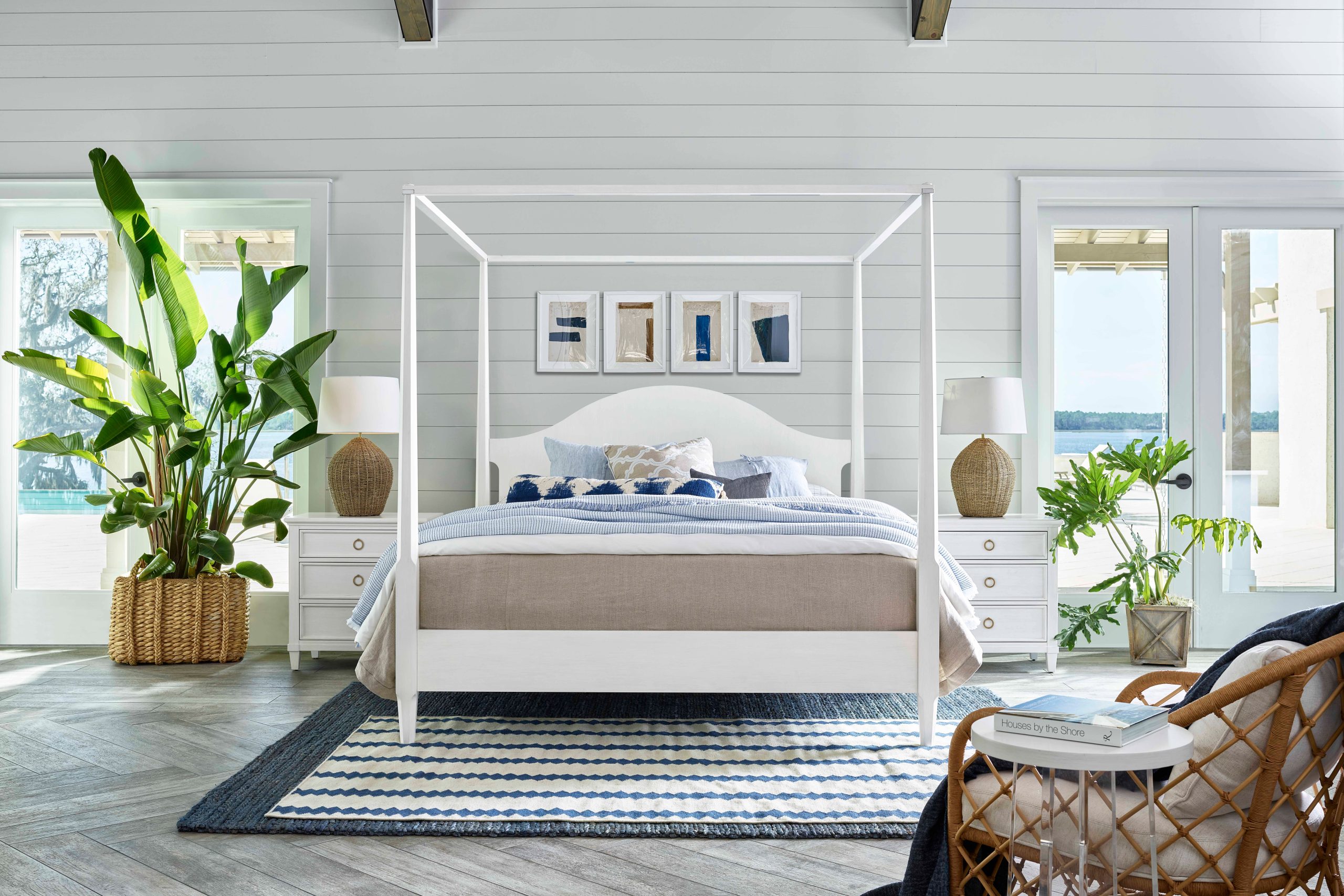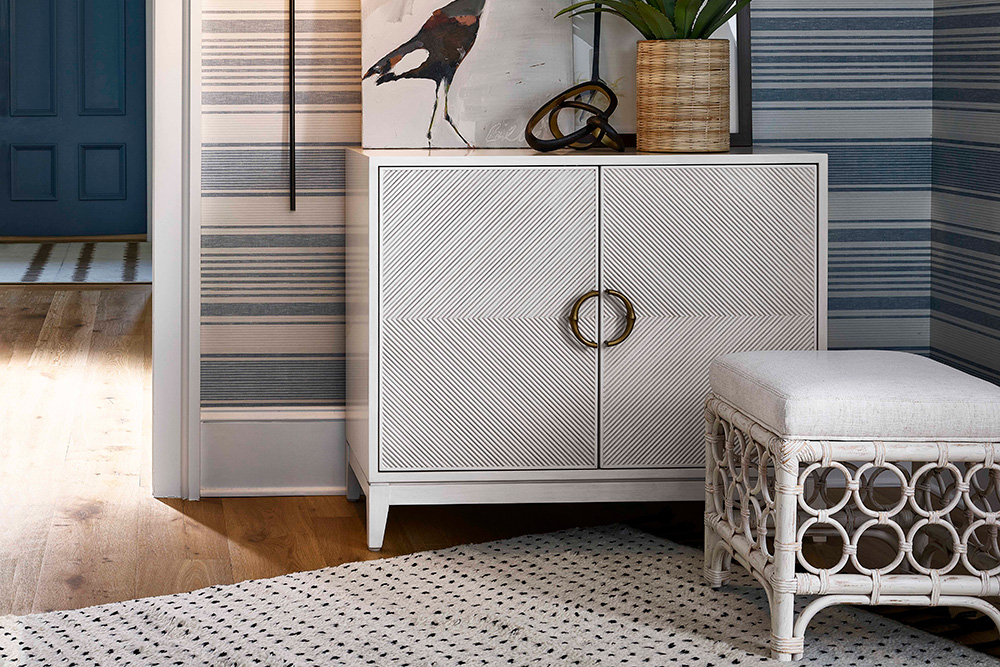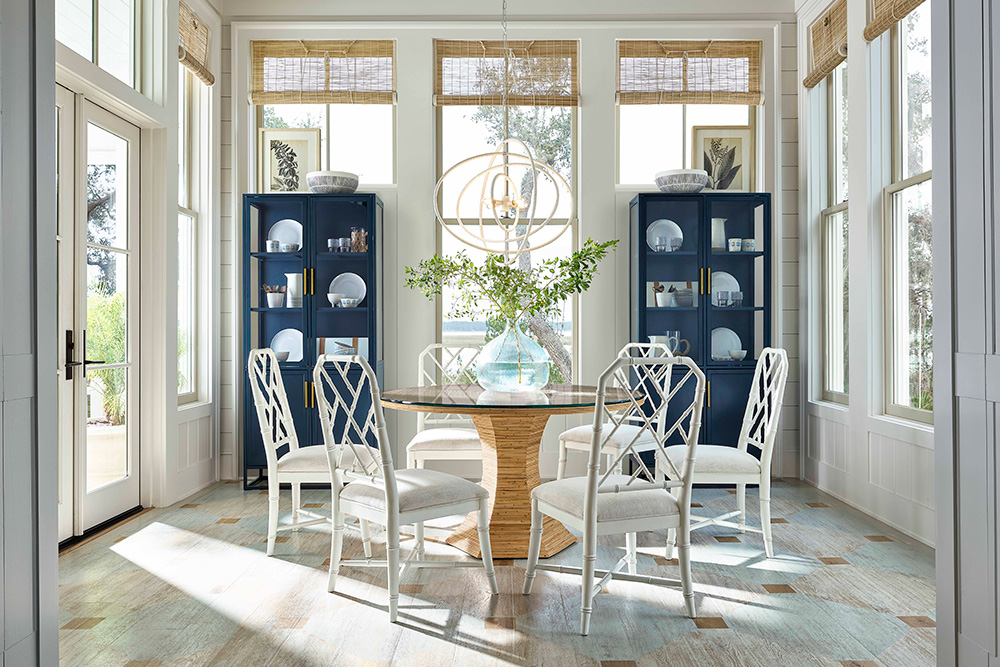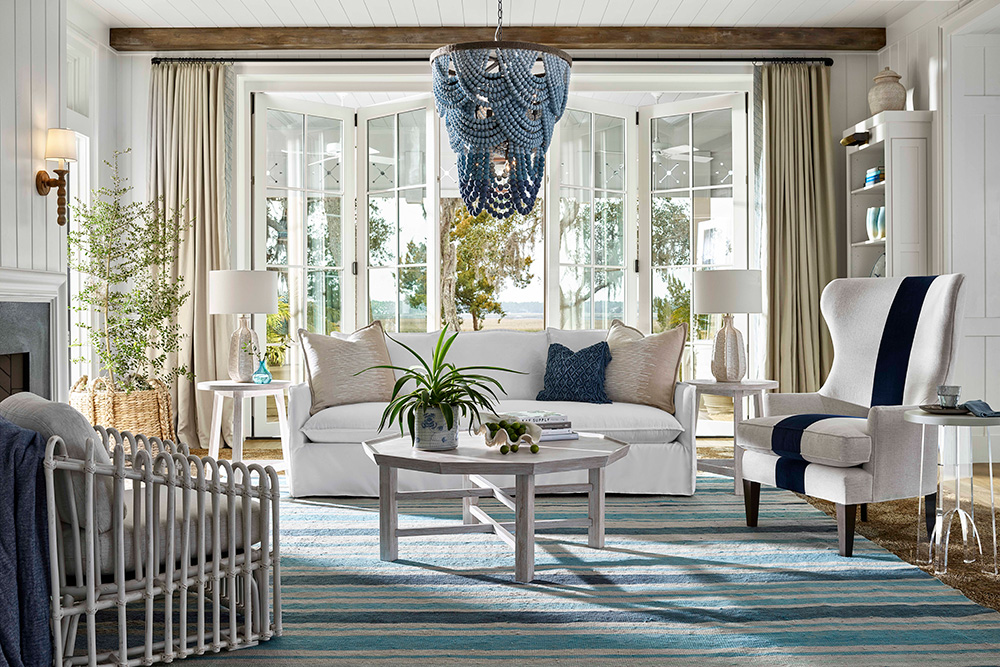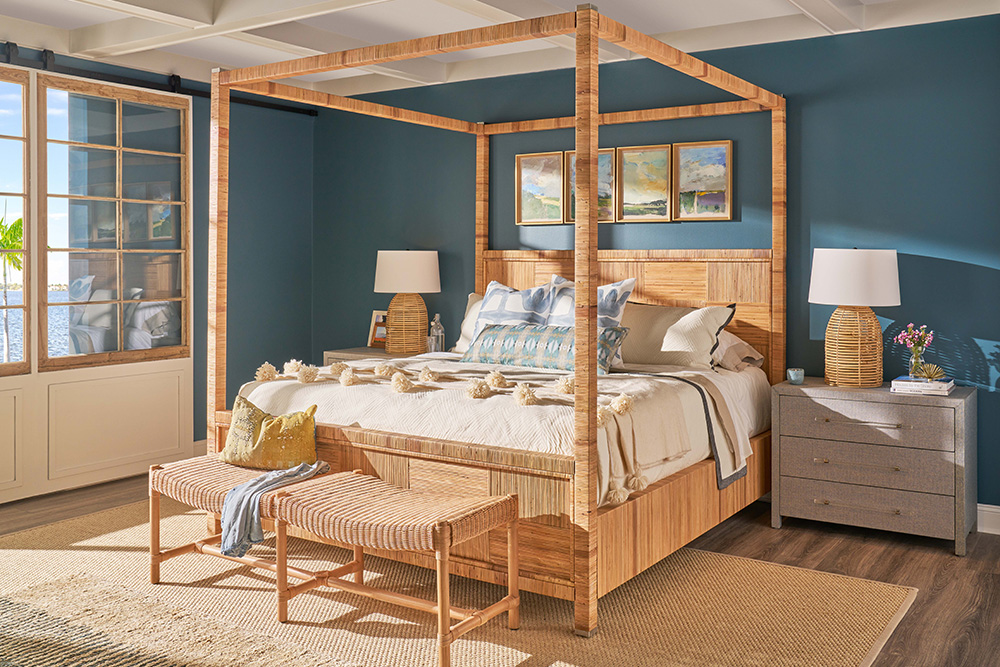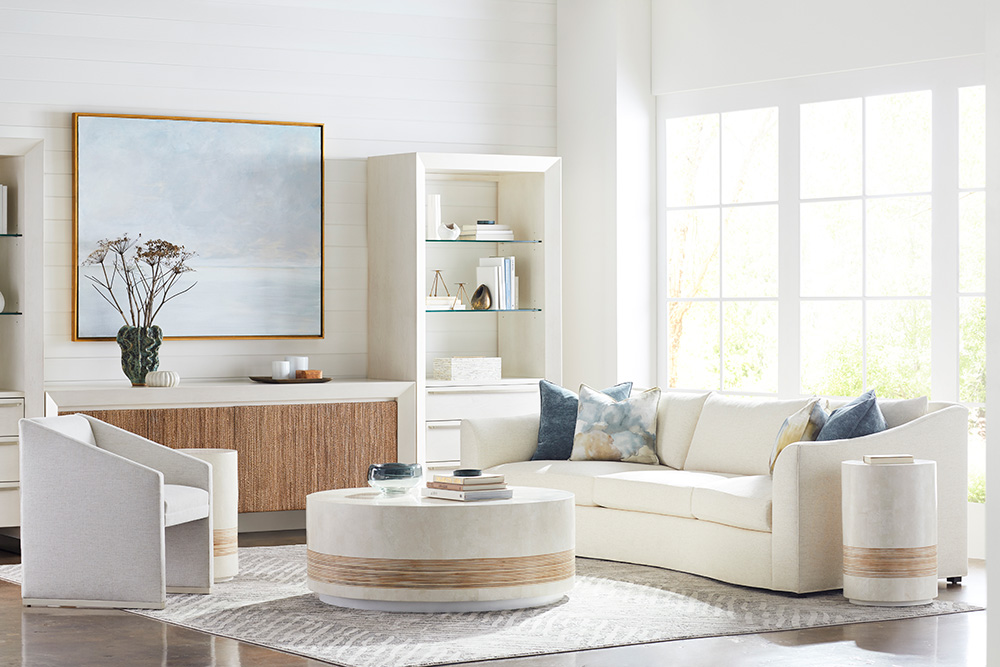Coastal


History of the Coastal Style
What we know today as tranquil and intentional design started centuries ago on the Atlantic coastline as a natural and necessary adaptation to life on the coast. As travel and trade expanded to carry people and goods overseas, port towns became increasingly important to the growing population of seafarers who settled their families and businesses on the coast.
This settling meant those who stayed established homes, store fronts, and entire towns using the materials around them from nature and their trades – wood, stone, sand, driftwood, reeds, cotton, linen, and rope. From the rocky shores of New England to the barrier islands of the Carolinas, and down to the white sands and Everglades of Florida – coastal design was a reflection of the natural beauty and resources of the coastline and varied from port town to port town.
As these initial settlements expanded inland, so did their style. Centuries of societal expansion and evolution saw the core of coastal design persist while simultaneously adapting to the tastes of a rising and stabilizing economy. This meant more financial freedom for homeowners to decorate and refine the style to their liking. It’s use began to shift upward to become a desired luxury style among the wealthy seeking to create a look of understated wealth and comfort in their summer homes and seaside mansions.
Today, the Coastal home style is highly versatile and can be found in one form or another in homes from the Hamptons to the Rocky Mountains. It’s popularity and ability to showcase a consistent set of core elements while also taking on the nuance of particular regions and individual tastes ensures that this style will persist for many years to come.
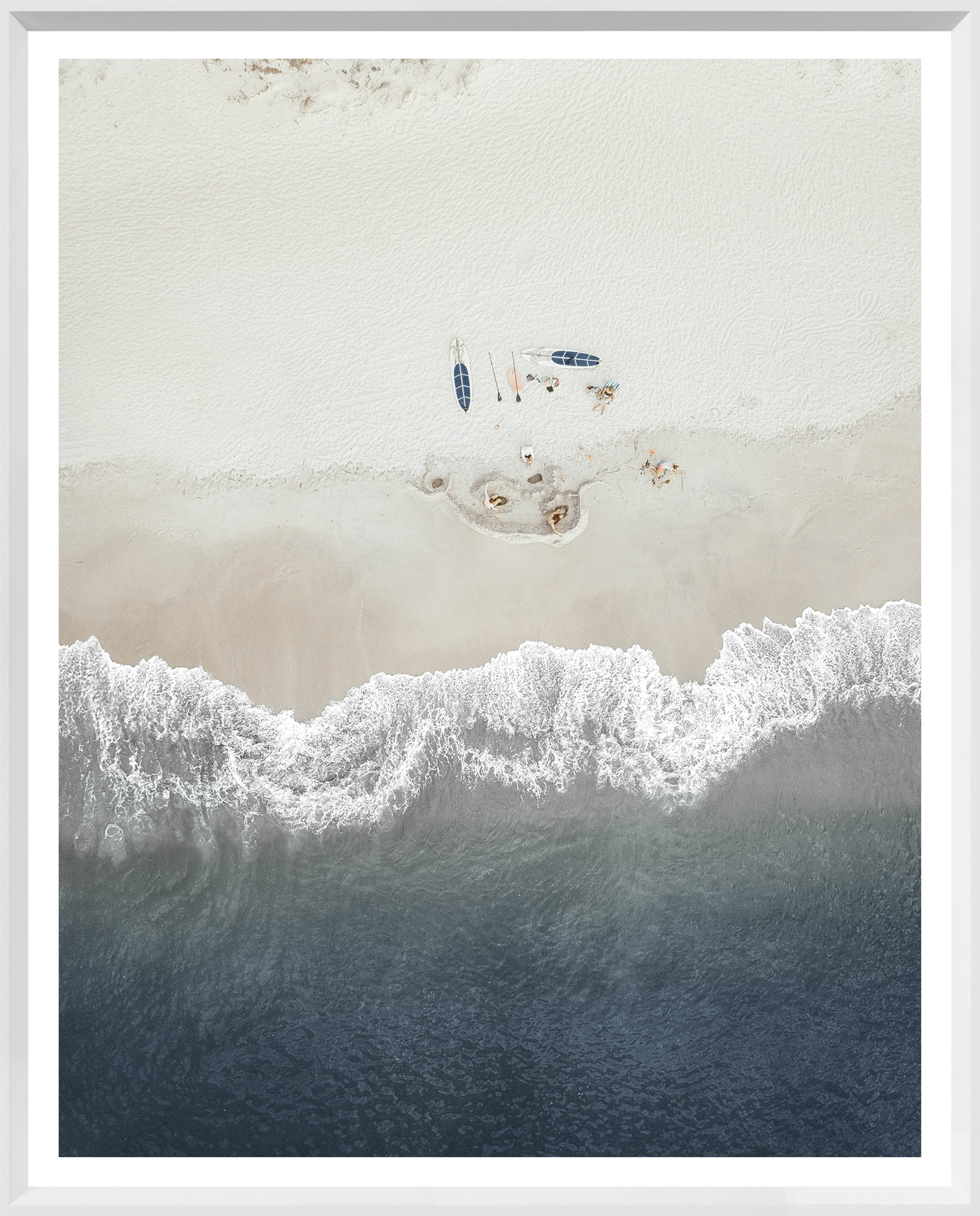
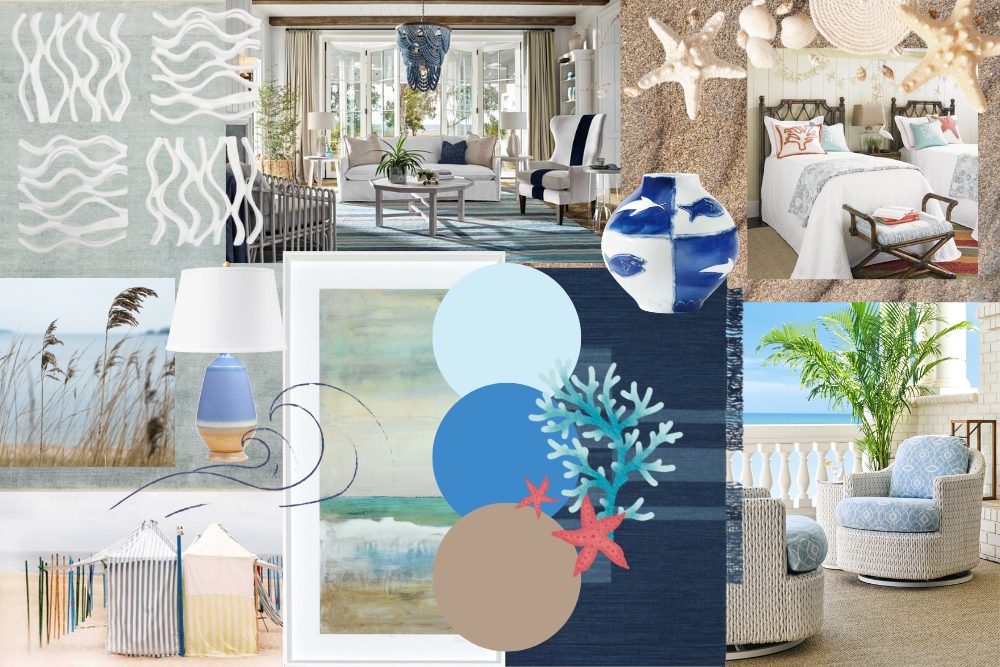
The coastal aesthetic isn’t just for salty sea dogs anymore. Bring the beach into your home with this fresh, modern update on a classic nautical look.
Just as its name suggests, the Coastal style draws inspiration from the natural beauty and serenity of sandy shores and rolling waves. A palette of rich blue and green tones against clean or distressed natural beige, grey, tan, and white creates a soothing ambiance reminiscent of waving dune grass, lapping tides, weathered boat hulls, and unfurled sails. Common materials include wood, glass, colored sea glass, rope, whicker, shells, linen, rattan, stone, and cotton. Make the space your personal getaway by adding pieces of coastal nature such as shells, driftwood, sand dollars, and greenery.
